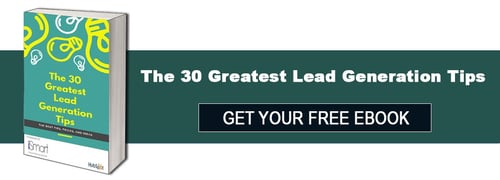By Samantha Hew on May 15, 2018 2:30:00 PM

H1s are usually the most visually notable content on any website page. This is undeniably the most important SEO feature of H1s. One thing to remember is that SEO has been steering towards the importance of user optimization and focus on the user rather than the technical optimization of the page.
Marketers and business owners alike constantly strive to achieve a good ranking of their website on search engines. 80% of the first page search results in Google use an H1, yet most businesses are using them incorrectly or not at all. In this post, I would like to emphasise the importance of having an H1 tag. Read on to see the top 7 tips for you to use your H1 tag effectively.
Why are H1s so important for SEO?
The H1 tag is typically the largest and most important tag on an individual page of a website. So, by using keywords in your H1 tag, you help search engines understand what your page is all about.
For example, if you are writing a page about lead generation, it would make sense for that page’s H1 tag to be something about “lead generation”, “all you need to know about lead generation” and “how do I go about doing lead generation.” With the ability to use keywords in the right places, SEO H1 tags are a valuable resource for any website trying to outrank the competition.
Here are 7 tips for you to effectively use your H1 tag:
1. Use only one H1
Every page only needs one H1 tag. Search engines will crawl multiple H1s on a page but the priority of an H1 tag is to focus your SEO efforts on one keyword phrase or sentence, as opposed to many. Thus, having more than one H1 may potentially dilute the SEO power of a single H1.
2. Your H1 should describe the topic of your page
The H1 should describe what your page content is all about:
- H1 tag will often be similar to your title tag
- H1 tag will usually be the title of your blog post or article
- H1 tag will normally give the reader a strong sense of what he/she is going to read
By doing so, the user can see at a glance what the page is all about by looking at the H1 tag and navigate through the page easily.
3. Your H1 should be 20-70 characters long
The truth is, the length is not important. However, try to keep it to a reasonable length. Reason is because if it’s too short, you’re wasting valuable space. But if it’s too long, you’re diluting the power of the tag. Hence, the recommended length of between 20-70 characters.
Remember, you don’t have to think too hard about what to put as an H1, it is perfectly fine to use a normal sentence as an H1.
4. Make your H1 stand out
Your H1 should be the most important visual element on the page. It should have a strong impact, noticeable and use visuals and style elements to make it stand out.
As we focus on user experience, it is important to make sure you capture the user’s attention with your H1 tag.
5.Create H1s that provide a good user experience
SEO has changed a lot over the past few years. Now, the influence of user experience has a huge impact on SEO. Search engines have evolved that they can intuit what users want, even as users are searching and browsing.
Search ranking is now based on the search and browsing habits of the search engine’s millions of users. In other words, how users interact with your page has a lot to do with how your page will rank.
Google is more likely to show you some love if you produce amazing content that gives the users the answers they are looking for and keep them coming back for more! Google will reward you with positive search rankings.
6. Use a focused long-tail keyword in your H1
By using a keyword in your H1 tag, Google crawlers are able to understand better what the page is all about.
If you don’t use a strong keyword in your H1, then Google can still find out what the page is about, index it appropriately, and give you a nice rank.
7. Answer user intent with your H1
Whenever you write a piece of content, you should consider questions like: “What does the user want when they open my article? What is the user’s intent?” Your H1 should satisfy that intent.
Summary: Bear in mind that H1s are still very important for SEO. They can make or break your website, your content, your traffic, and your rankings. I hope you will use these tips on your website and experience the growth in traffic!
Read more: How to Build a High Performance Website for Lead Generation





comments